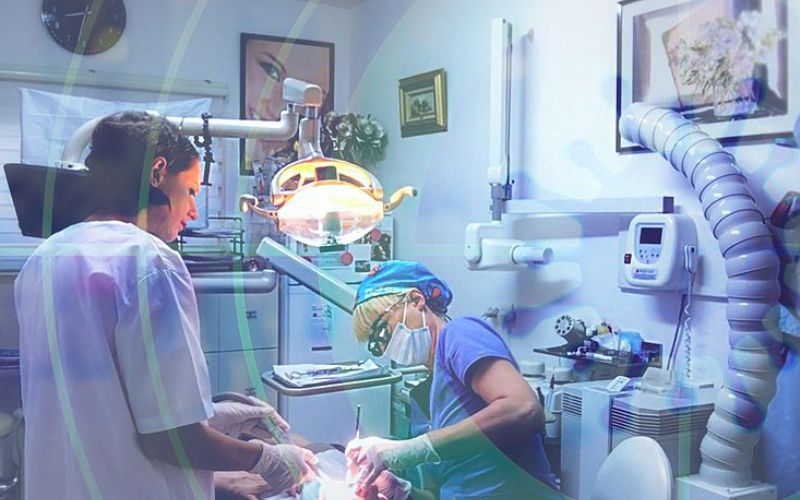If you’re looking for dental restoration treatments for damaged and broken teeth or just to brighten your smile, you’ve probably been considering dental veneers or dental crowns. Both of these forms of cosmetic dentistry can improve both the appearance and function of your natural teeth.
Ahead of any dental treatment, you should understand the differences between these two dental procedures in order to figure out which one is best for you.
Table of Contents
ToggleWhat Are Porcelain Veneers?

The first of the two restorative treatments for tooth decay is veneers. A porcelain veneer is a tooth-coloured shell that is designed to cover the tooth surface as a way of improving the tooth’s appearance. The porcelain is bonded by the dentist to only the front surface of the prepared tooth and changes the natural shape, colour, length, and size of the tooth structure.
It is a less invasive treatment that can improve the look of discoloured or decayed teeth as a result of:
- root canals
- stains from things like coffee or smoking
- excessive fluoride
- large resin fillings
- chips
- misalignments or irregular shaped teeth
- teeth caps
What Are Dental Crowns?

Another form of cosmetic improvement is the dental crown. Dental crowns are designed to cover the whole tooth. Because of this, the natural tooth will have to be shaved down throughout the procedure.
This type of dental work is typically used on a weak tooth or teeth that are badly damaged and need more work than just on the surface. They are also recommended for patients who have undergone a root canal as the tooth enamel is usually more compromised.
If you have a broken tooth, the dentist will need to first rebuild a portion of the tooth to prepare for the crown placement. As well, the amount of tooth structure required also depends on the crown material used.
For most patients, a local anesthetic is used to make the procedure more comfortable. You may also be offered a temporary crown by the dentist. Temporary crowns are used while the permanent crown is being made.
Crown Materials
Dental crowns can be made up of different materials. These include:
- Metal: These last the longest and are considered to be the strongest type of crown.
- Porcelain fused to metal alloy: The porcelain gives the natural tooth a better appearance but may be more prone to chipping
- Resin Composite Materials: a cheaper option that can wear down faster than other options
- Porcelain and Ceramic: Crowns that are the most natural colour, but may wear down the surrounding teeth.
- Pressed Ceramic: Porcelain-coated ceramic veneer that may last longer than those only made of porcelain.
What Are The Similarities and Differences?

Understanding the differences between veneers and crowns can ensure that you know which of the two cosmetic improvements is best for you.
When it comes to the similarities between veneers and crowns, one of the biggest is that they both improve the appearance and function of the tooth underneath; however, only a thin layer is used for veneers. As well, if you have both crowns and veneers, it will be hard to see the difference between the two as they have a similar effect on the appearance of your existing tooth. For both types, you may experience some gum pain after the procedure.
The biggest difference between a permanent veneer and a crown is the way they fit your tooth and the reason you might need them. A porcelain veneer is bonded to just the front surface of your tooth, leaving most of your tooth exposed, while a dental crown covers your entire tooth.
This tends to make veneers more aesthetically pleasing than crowns because they show less gum margin. Crowns are much thicker than veneers— about half a millimeter or so.
While veneers may need to be replaced after a certain number of years, crowns may be able to last most of your life.
How Much Do Veneers and Crowns Cost?
Veneers can cost anywhere between $900-2,500 for each tooth. Composite veneers are typically a cheaper option for front teeth, but they might only last 5-7 years. Porcelain veneers are a more expensive option, but they will likely last longer. Porcelain crowns are a bit more expensive and can cost about $1,000-3,000 per crowned tooth.
If you have dental insurance, it will often cover a portion of a crown treatment, but not cosmetic veneers.
Which One Is Right For Me?
You can often figure out which type of treatment is right for you by the state of your teeth and what you hope to change. If you have deep damage to your teeth, crowns will be the recommended procedure. If you’re just hoping to improve the look of your front teeth, veneers cover and improve the look of your natural teeth.
In any case, it’s important to talk to a cosmetic dentist before going ahead with a treatment.
Connect with us
Looking for a trusted Dentist in Hamilton? Look no further! Century Stone Dental is here to provide you with exceptional dental care. Visit us at 684 Main St E, Hamilton, ON L8M 1K5, or give us a call at 905-545-4833 to schedule your appointment. Your smile is our top priority
No matter your age, dental condition, and if you have a million questions, Dr. Sims can assist you or your young children in a professional manner and loves answering any of your questions or concerns. Dr. Sims grew up in Grimsby playing basketball, so he’s always up for talking about the Raptors! He’s also a football fan - go Buffalo Bills! In his free time, if he’s not watching a basketball game or football game, you’ll likely find him working out, cooking (got any new recipe ideas?), and of course, spending time with his amazing family.
- Tongue Tie Surgery: Medical or Dental? Your Complete Guide - February 28, 2024
- What to Eat After Tooth Extraction - January 16, 2024
- What Medical Professionals Treat Tongue Tie? - January 5, 2024











